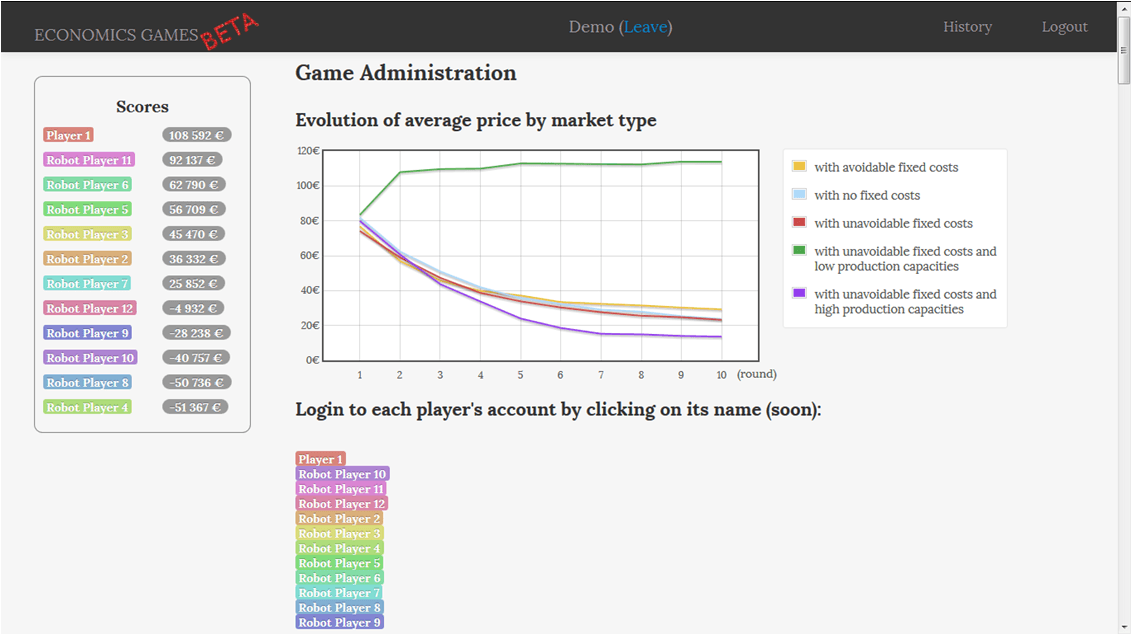The Competition Game
Introducing driving forces behind price competition, and the impact of fixed costs and capacity constraints on prices and profit
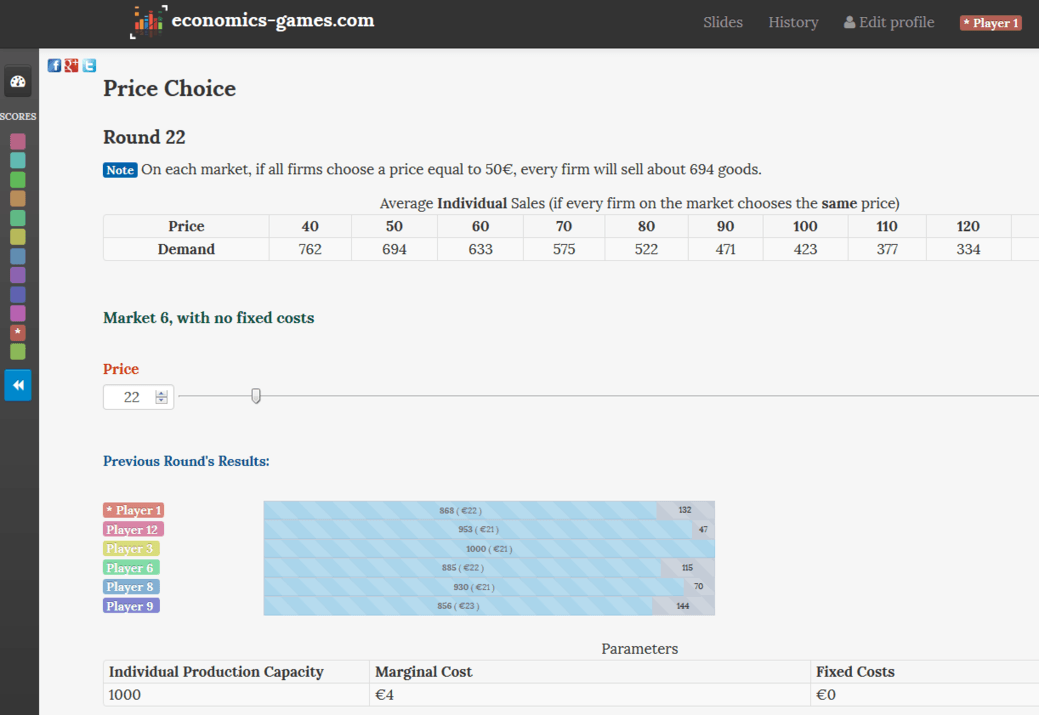
Rules as explained to players:
- You will compete in price against the same competitors on 5 markets which only slightly differ: On every market, the marginal cost of production is constant and equal to 4€ and demand is the same:
- If every player charges a price equal to 50€, each player will sell about 694 goods.
- If every player charges a price equal to 40€, each player will sell about 762 goods.
- What differs is that on some markets there are fixed costs, and on others not. Also production capacities differ from one market to another.
- On a market with fixed costs equal to €35000, your total cost if you sell q goods is €35000 +4*q. On the market with no fixed costs, it is €4*q.
- On the last market, you have the option to enter the market or not. Fixed costs will only be paid if you enter the market.
- Your goal is to maximize your company's profit, not to beat your competitors nor to sell the maximum number of goods (and anyway your final ranking will be determined by comparing your profit against every other players, some of which compete in different "universes")
| Price | 40 | 50 | 60 | 70 | 80 | 90 | 100 | 110 | 120 | 130 | 140 |
|---|---|---|---|---|---|---|---|---|---|---|---|
| Demand | 762 | 694 | 633 | 575 | 522 | 471 | 423 | 377 | 334 | 291 | 251 |
Parameters on the different markets:
| Individual Production Capacity | Marginal Cost | Fixed Costs | Entry option |
|---|---|---|---|
| 1000 | €4 | €0 | no |
| 1000 | €4 | €35000 | no |
| 400 | €4 | €35000 | no |
| 2000 | €4 | €35000 | no |
| 1000 | €4 | €35000 | yes |
For more information about demand or about how to use this game within a sequence of market games:
Screenshots:
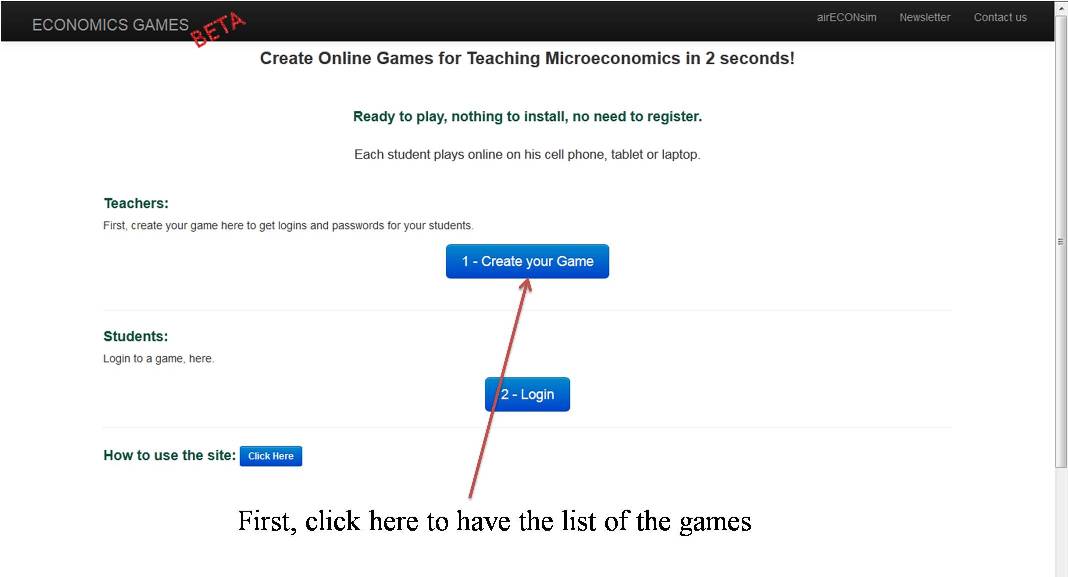
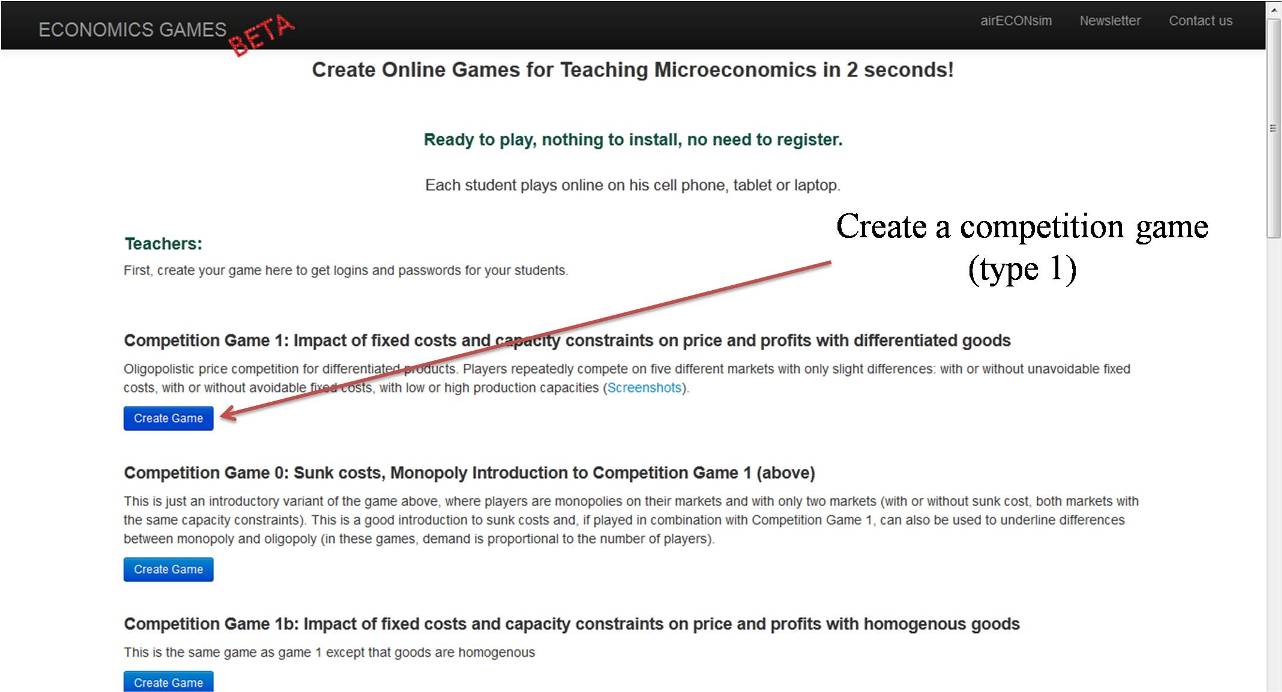
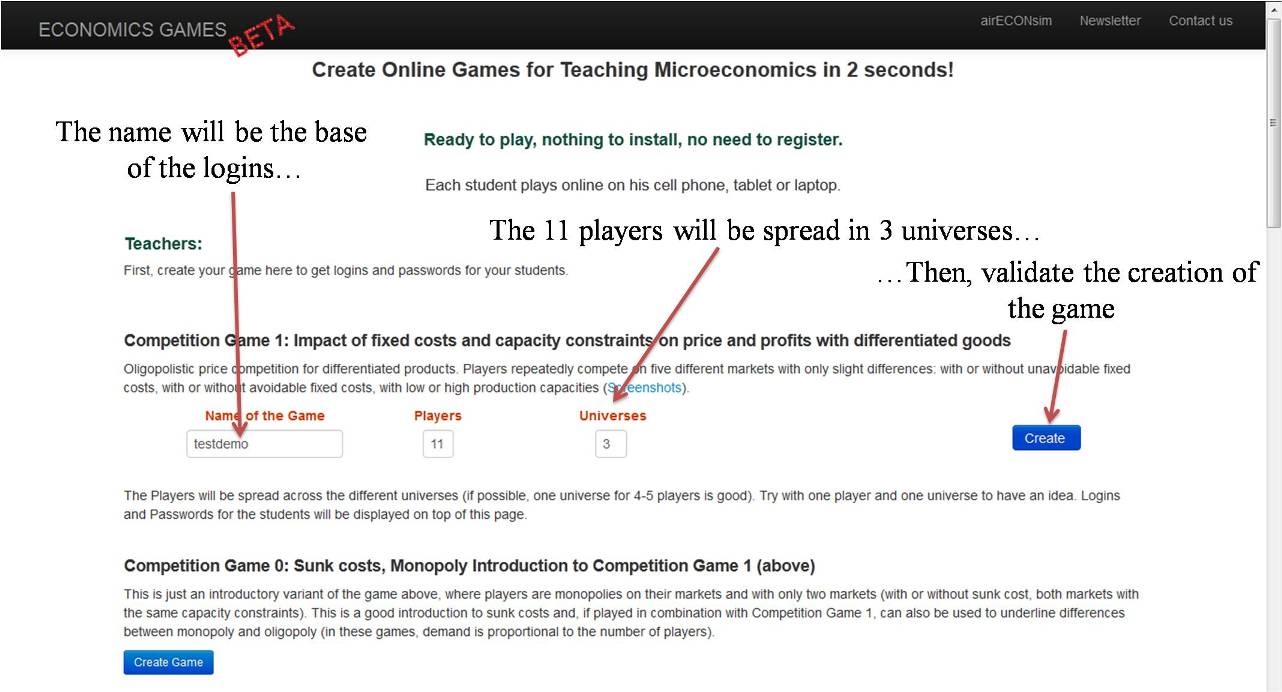

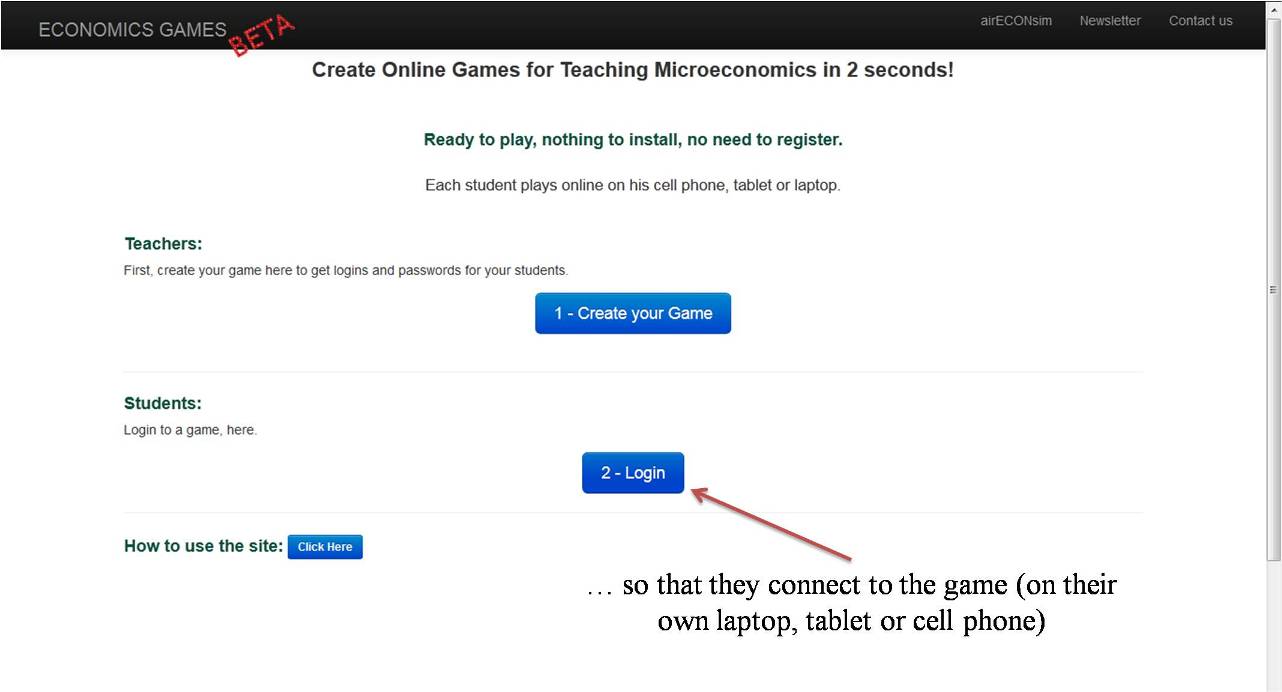

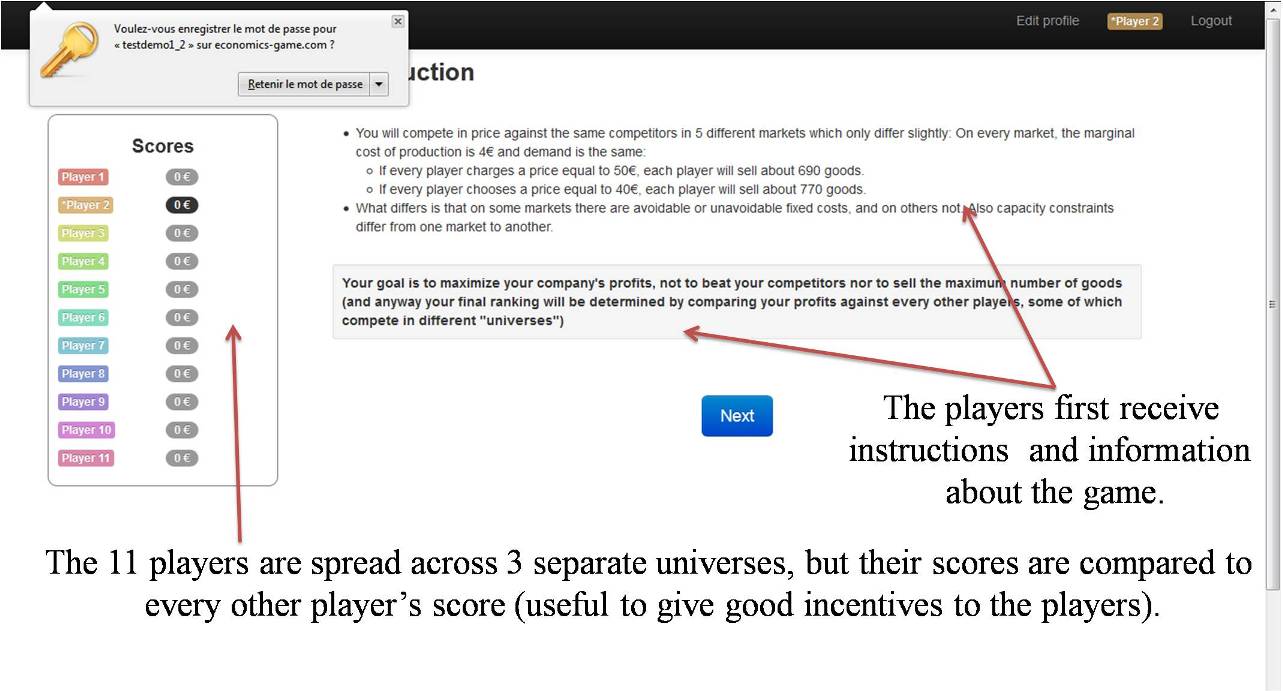
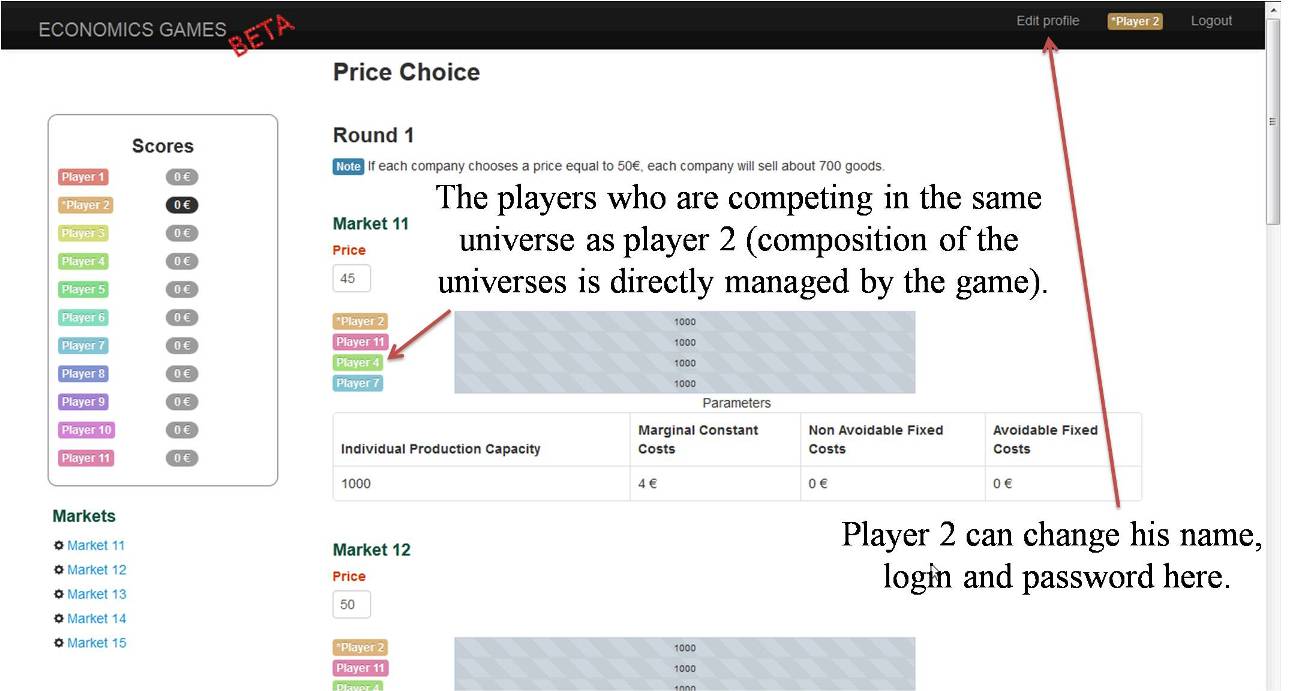
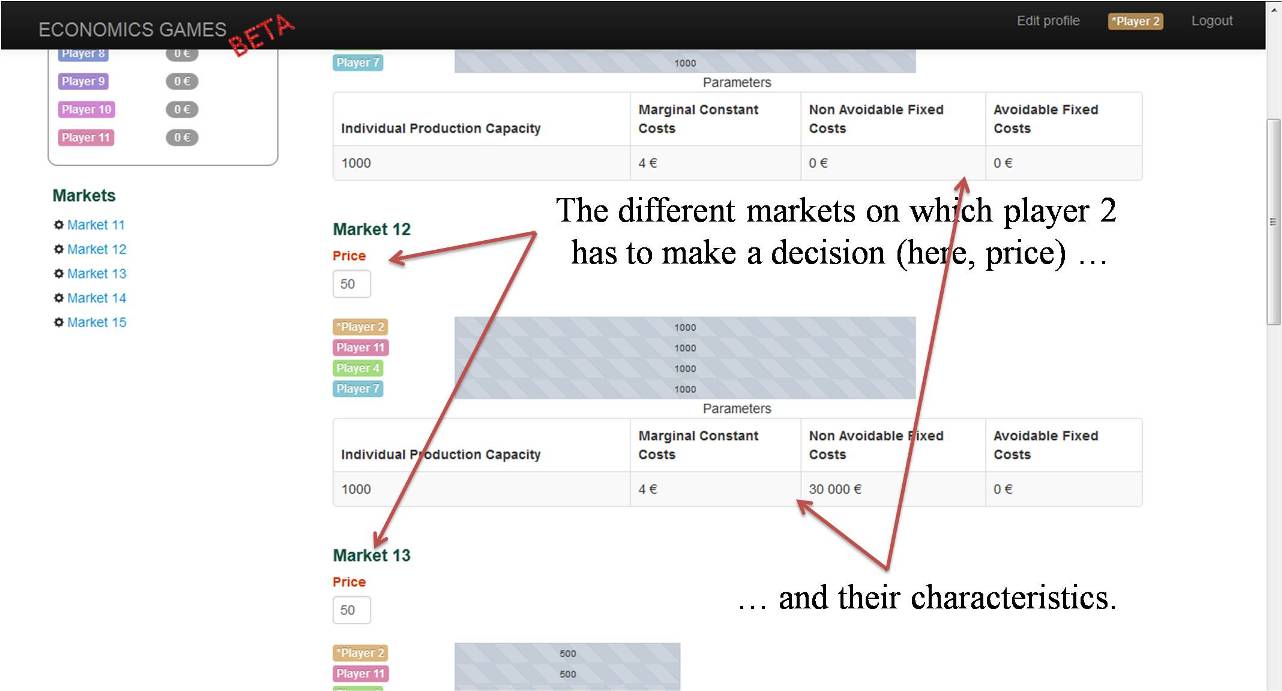
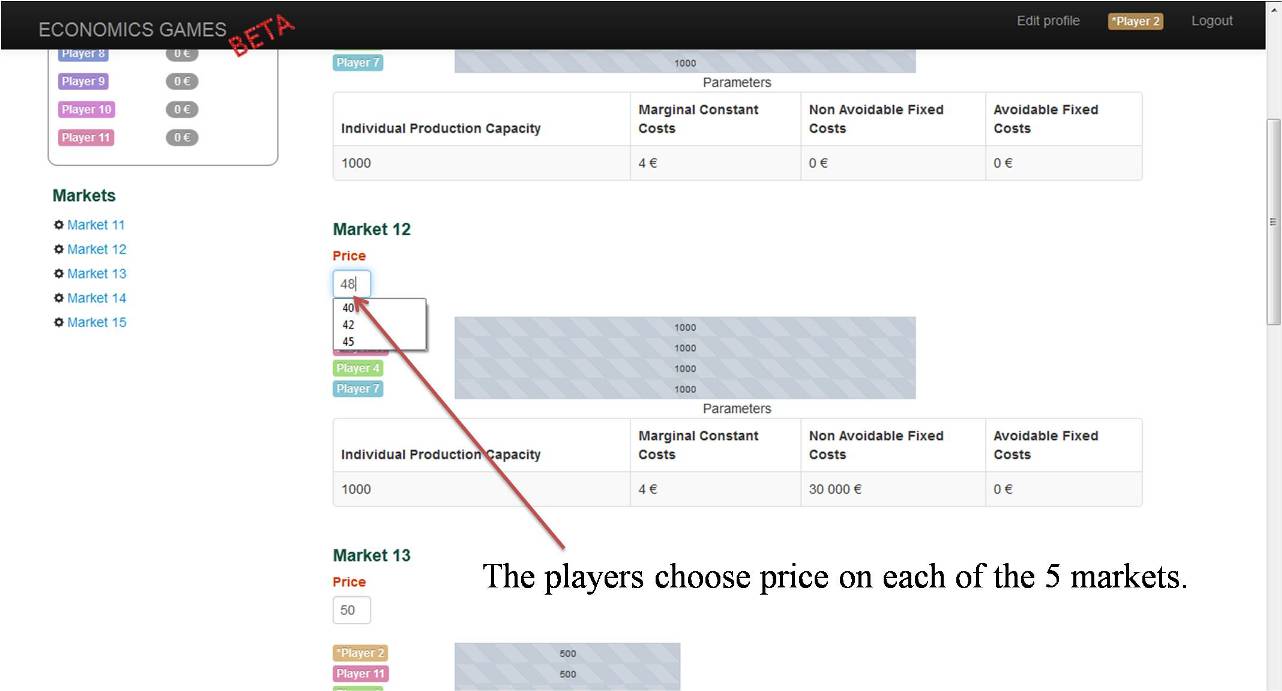
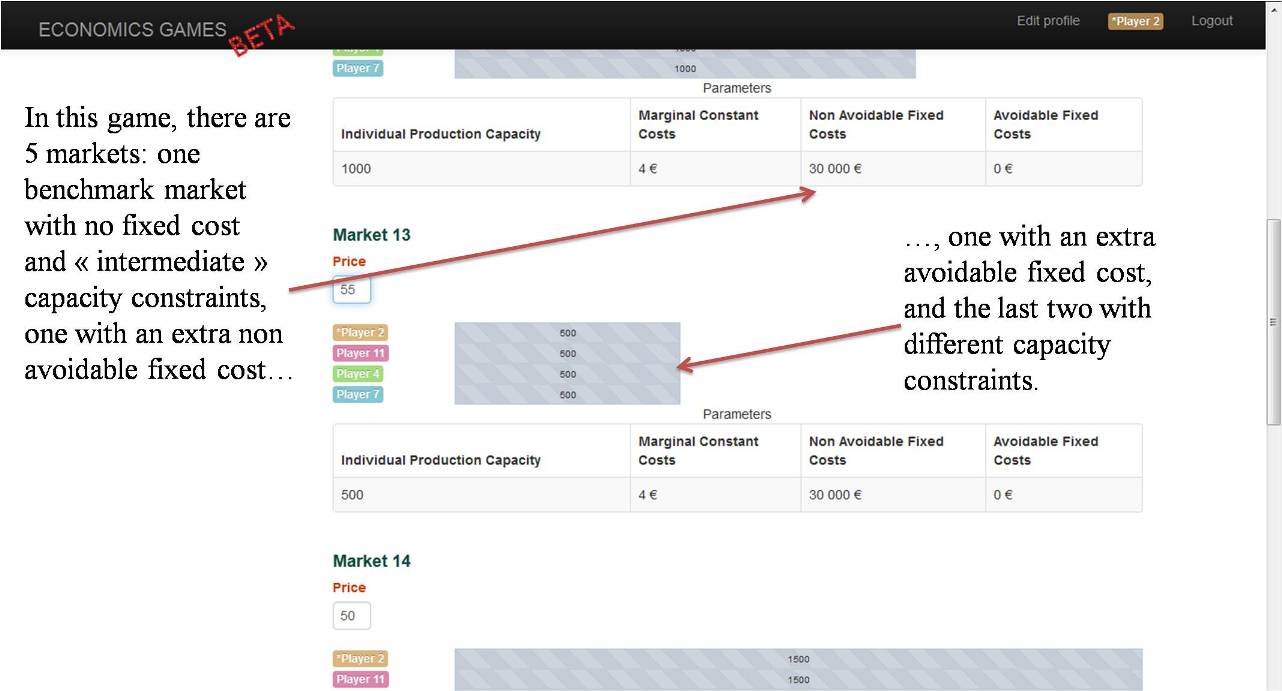
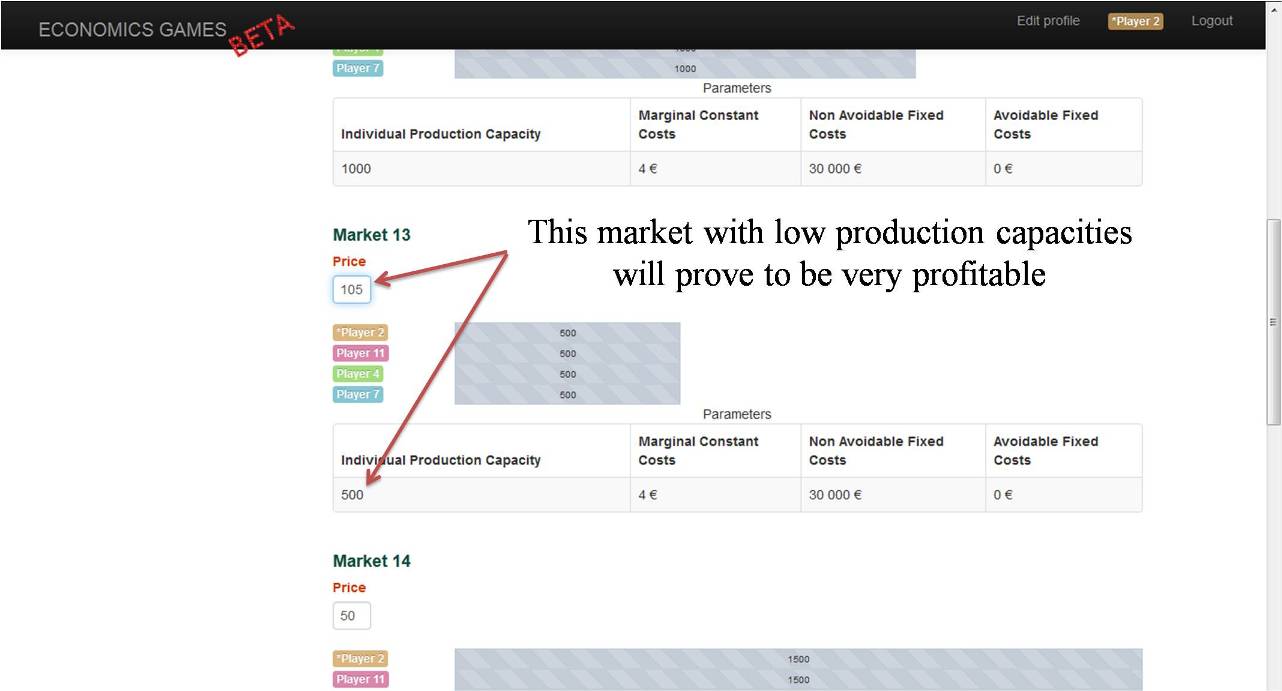
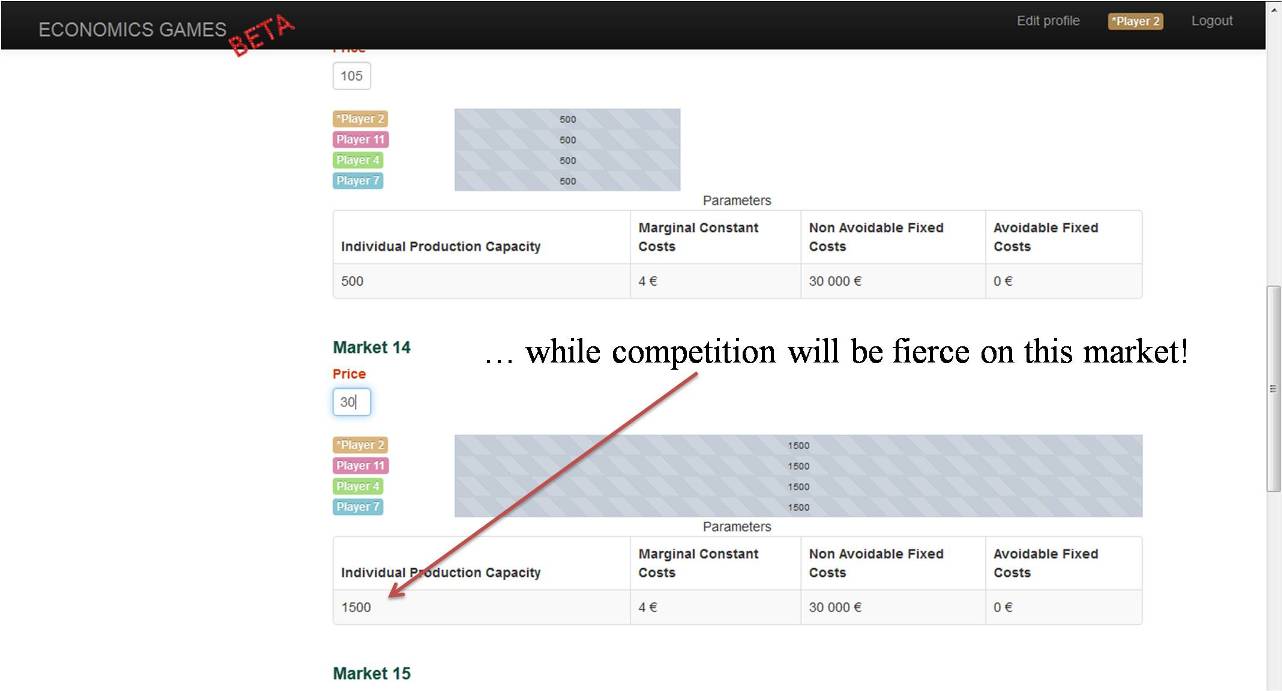
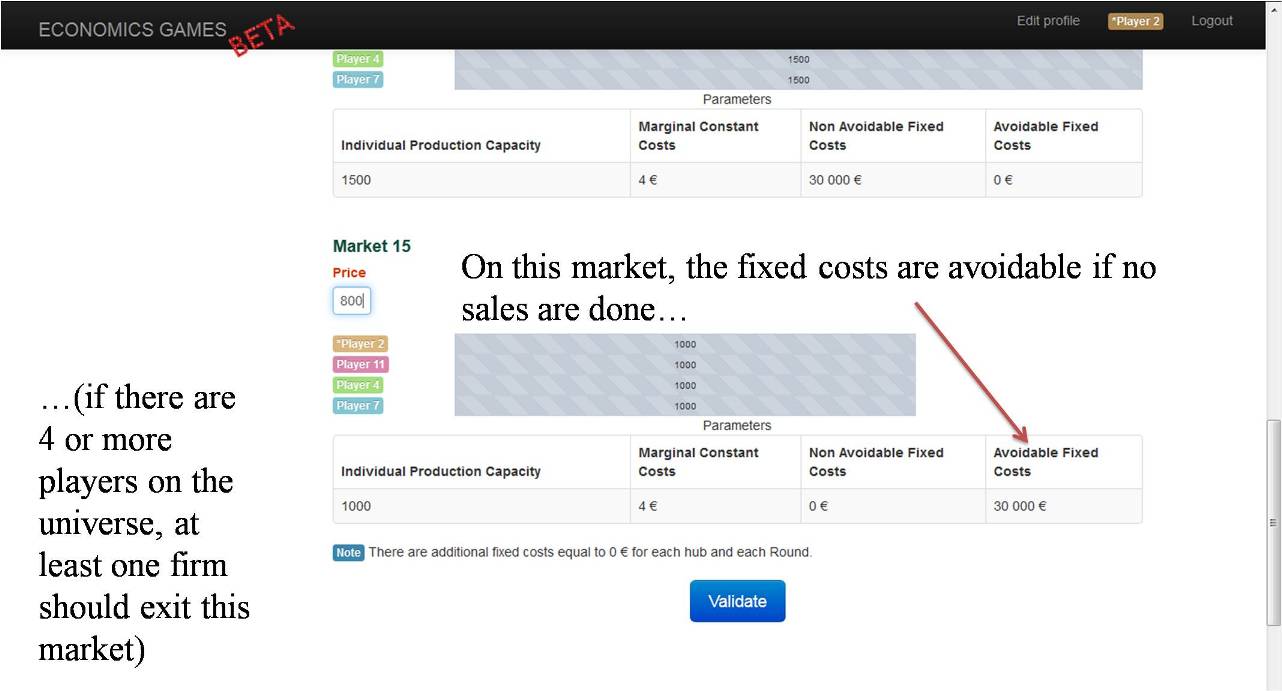
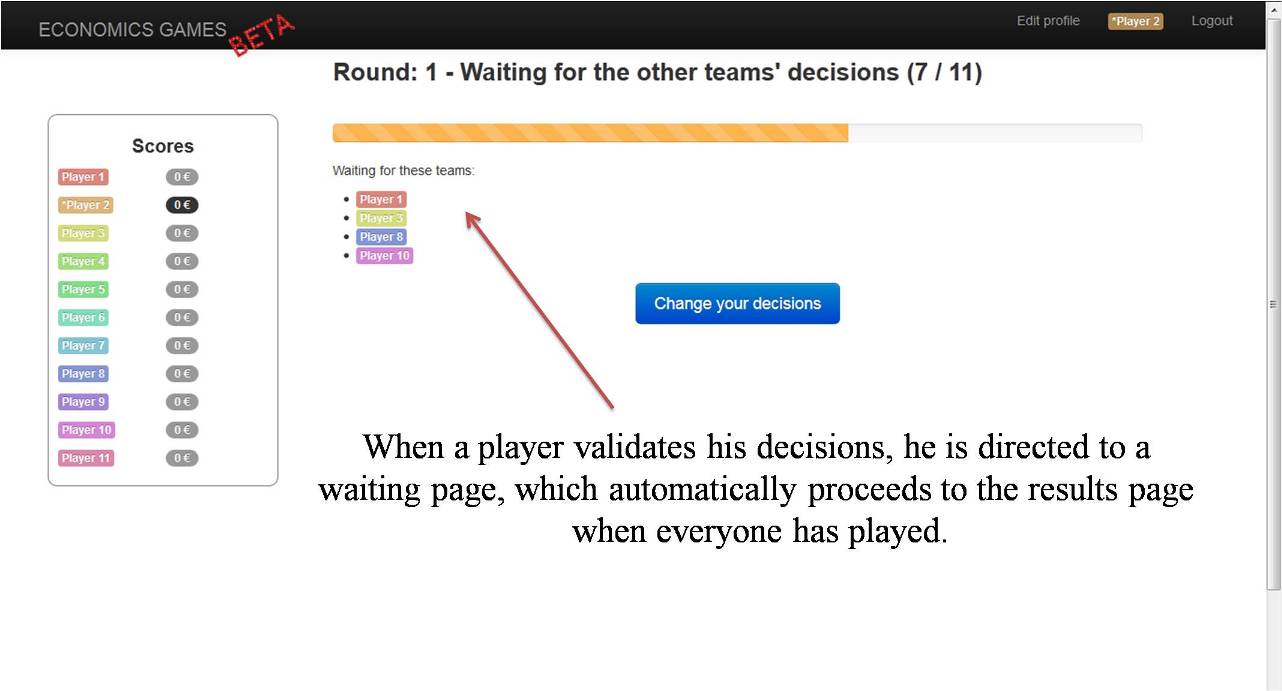
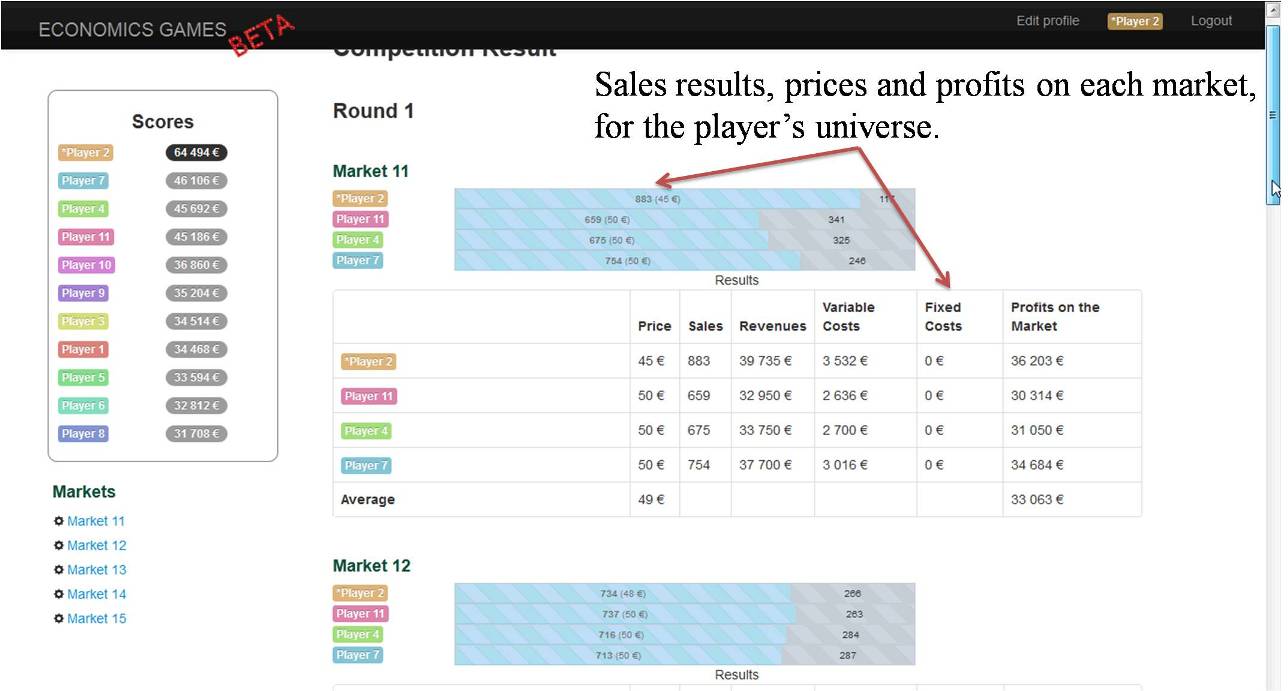
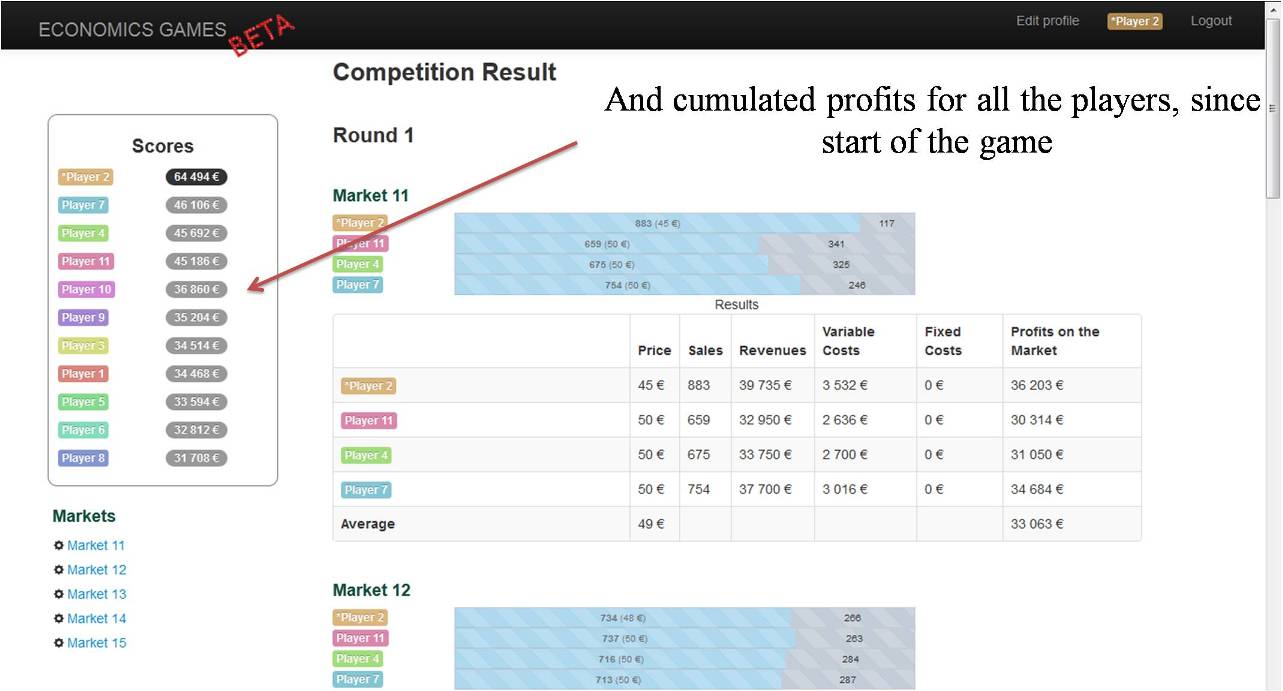
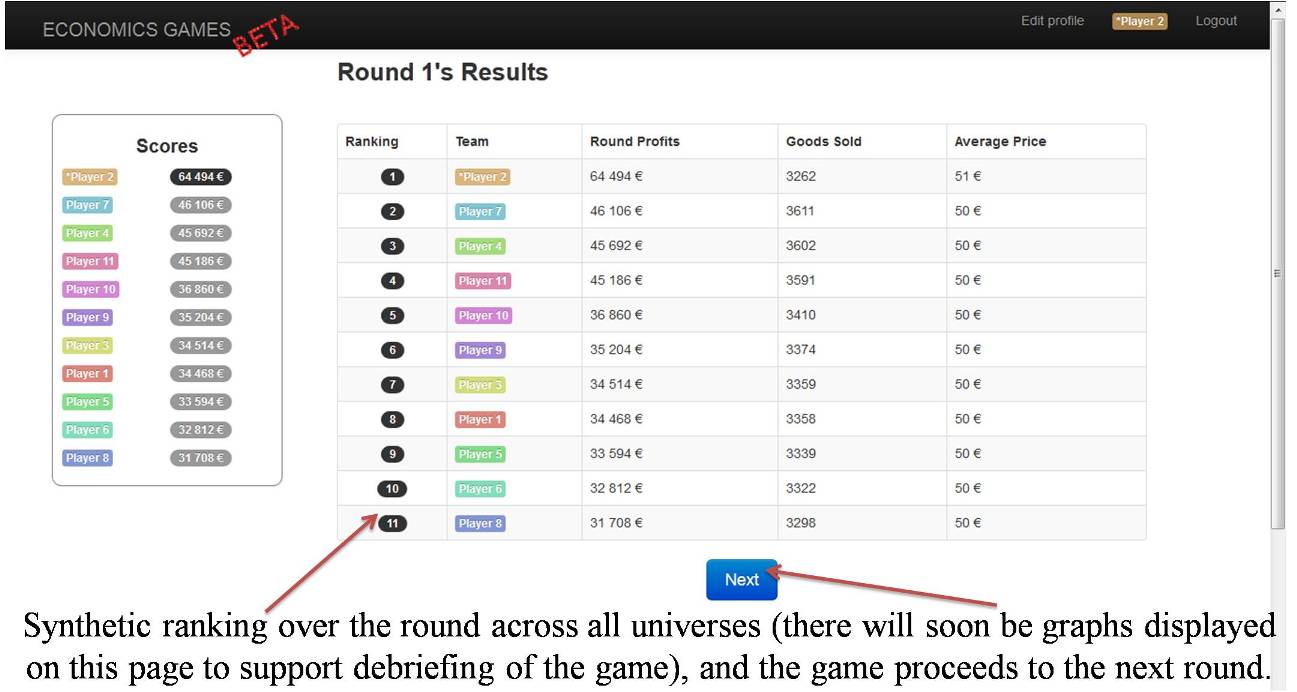

The instructor has all the detailed and synthetic results and their evolution on his administration screen.
Below, as predicted by theory, prices fall for all the markets on which production capacities are not too scarce. After a few iterations, prices with or without unavoidable sunk costs usually become very similar (red and light blue curves).
This evolution is even more spectacular with homogeneous goods, as the firm with the lowest price gets all the market (up to his capacity). If possible, we would recommend to have at 5-6 players by universe to speed up the convergence.
